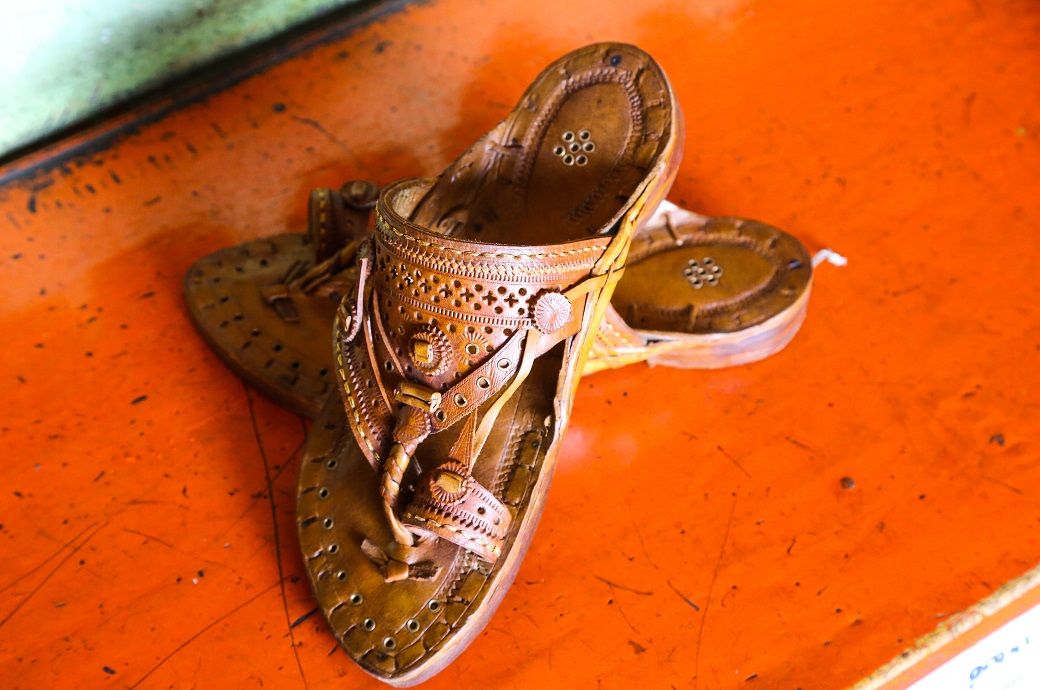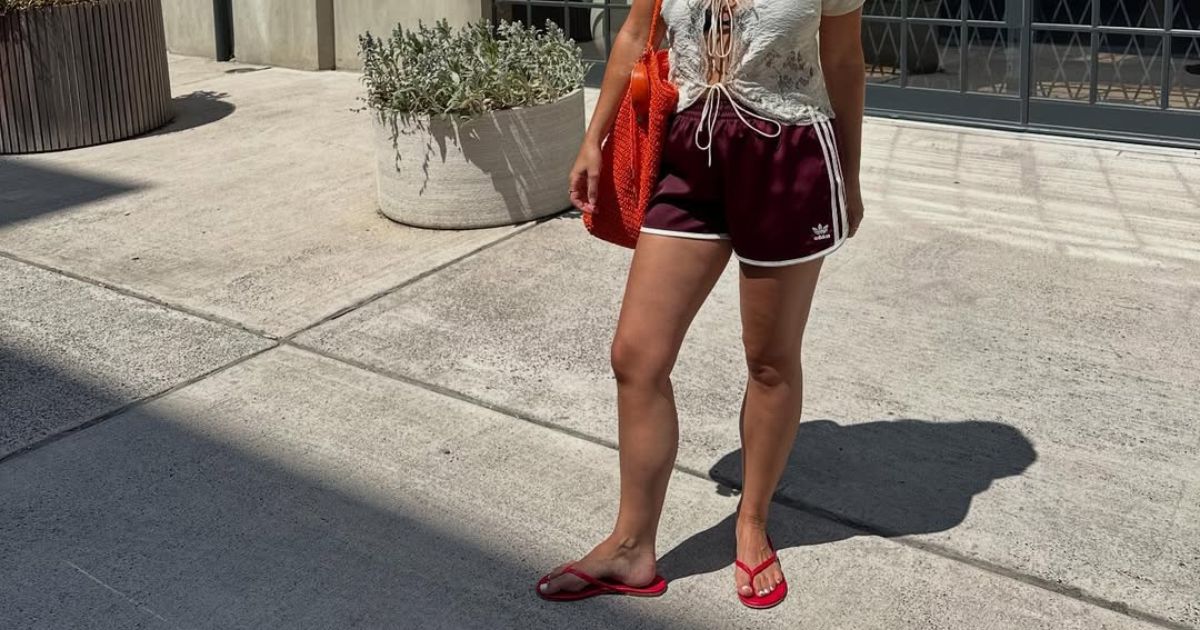The LSU Textile & Costume Museum’s exhibit, ‘Color Me Fashion,’ uses color to explore fashion history. More than 45 pieces from the museum’s permanent collection are on display through Aug. 15.
Michael Mamp can’t contain his smile when walking into the LSU Textile & Costume Museum main gallery, which proves Russian artist Wassily Kandinsky right.
“Color is a power which directly influences the soul,” Kandinsky said.
That’s certainly the case with Mamp, the museum’s director. His smile grows bigger while surveying the museum’s newest exhibit, “Color Me Fashion,” where Kandinsky’s quote is displayed within a splash of orange and blue among more than 45 designs categorized by complementary colors.

Artist Wassily Kandinsky’s quote, ‘Color is a power which directly influences the soul,’ is prominently displayed in the LSU Textile & Costume Museum’s exhibit, ‘Color Me Fashion.’
Welcoming spring
The show opened March 23, joining the azaleas, wisteria and regional Holi festivals’ colorful celebrations in welcoming springtime to Louisiana. It runs through Aug. 15.
Mamp, assisted by curatorial graduate students Morgan Strzynski and Katherine Bankhead, chose pieces from the museum’s permanent collection. The designs and their related accessories use color to explore fashion history between 1890 and 1990.
And though Mamp knows every stitch and thread in this room, he’s still amazed at how the barrage of color, as Kandinsky would say, influences his soul.

The LSU Textile & Costume Museum’s exhibit, ‘Color Me Fashion,’ uses color to explore fashion history. The show represents a century of fashion between 1890 to 1990, which is grouped in categories of complementary colors.
Color affirms joy
“To me, color is one of those life-affirming things,” he said. “I study fashion because it’s joyful, and I think that color is a way to be immersed in that joy. I want people to come in here and experience that kind of joy.”
Each piece in the exhibit has its own story, whether it’s tied to a designer, the person who wore it, an ancient way of stitching or Marilyn Monroe.
The iconic Hollywood legend factors into the shades of pink and pantone, the former being this year’s “it” color among home and clothing designers. The pinks take the spotlight in glass cases at the center of the room with William Travilla’s design highlighted near the front.

This sequined dress was designed by William Travilla, who also designed Marilyn Monroe’s iconic ‘shocking pink’ gown for her number ‘Diamonds are a Girl’s Best Friend’ in the movie ‘Gentlemen Prefer Blondes.’ It is featured in the LSU Textile & Costume Museum’s exhibit, ‘Color Me Fashion.’
Meet Marilyn’s designer
Travilla designed costumes and dresses for film stars during Hollywood’s golden era, one being the “shocking pink” gown worn by Monroe while singing “Diamonds Are a Girl’s Best Friend” in the 1953 film “Gentlemen Prefer Blondes.”
Monroe never wore Travilla’s dress design in LSU’s exhibit, though it looks like it was made for her. Gold sequins drip from its low cut bodice, oozing on its pink, chiffon, flouncy skirt.
The dress’ combination of gold and pink also is an example of Mamp’s mindfulness of grouping complementary colors.

The LSU Textile & Costume Museum’s exhibit, ‘Color Me Fashion,’ includes designer Geoffrey Beene’s meticulously stitched pieces. Beene was a native Louisianan whose design was once the toast of the New York fashion world.
“In the world of color, opposites attract, and unlike humans, opposites often work really well together in the fashion color world,” he said. “In December of 2024, Vogue magazine did a special issue that was edited by guest designer Marc Jacobs. And on the cover of that month’s issue was a model dressed in vibrant color and a background in vibrant color. So, I took that as a starting point for this exhibit.”
Whereas blue and orange are opposites on the color spectrum, they work well together in the first grouping of designs that include pieces by Oscar de la Renta and Emanuel Ungaro, as well as a dress from the 1920s with a hand-painted bodice in blues and golds.
“The blue skirt on the 1920s piece is velvet and has an asymmetrical hem,” Mamp said. “And it has a Franklin Simon & Co. label in it, which was a very old New York department store.”

The circa 1920s dress, right, has a hand-painted bodice and a velvet skirt with an asymmetrical hem. The dress has a label from the Franklin Simon & Co. department store, which once was prominent in New York. It is featured in the LSU Textile & Costume Museum’s exhibit, ‘Color Me Fashion.’
Stories behind fashion
But not everything is blue and orange. Mamp has designed each grouping in the exhibit to flow into the next. Blue and orange gradually morph into green and yellow designs that include a finely embroidered, silk Edwardian bodice worn by author Amelie Rives Troutbetzkoy.
“She was a feminist author in the late 19th and early 20th centuries known for her books, ‘The Quick or the Dead?’ and ‘World’s End,'” Mamp said.
“The Quick or the Dead’s” philosophical approach to life and the afterlife caused a national stir when it was published in 1888, especially in its examination of reincarnation. “World’s End,” Troutbetskoy’s first novel, published in 1914, was considered even more scandalous with themes that included the erotic passions of a newly widowed woman.

This embroidered silk Edwardian bodice was worn by author Amelie Rives Troutbetzkoy, whose late 19th and early 20th century books caused a stir in the United States. It is featured in the LSU Textile & Costume Museum’s exhibit, ‘Color Me Fashion.’
“Through this show, you’re also learning the stories behind the fashion and these pieces,” Mamp said. “They all come together to tell this bigger story of color.”
Both digital and static information stations spell out these stories.
Visitors can learn which evening gowns were worn by Katherine Long, former wife of U.S. Sen. Russell Long; which garments were embroidered with the “forbidden stitch” once reserved only for members of Chinese royalty; and which garments were designed by Louisiana native Geoffrey Beene, whose pieces once were the toast of the New York fashion world.

This silk garment was hand-embroidered using what is known as the ‘forbidden stitch,’ which once was reserved only for garments worn by Chinese royalty. It is featured in the LSU Textile & Costume Museum’s exhibit, ‘Color Me Fashion.’
His pieces are found in the purple and gold grouping.
Purple and gold
“Of course, we had to have a purple and gold section for LSU,” Mamp said, laughing. “They’re also complementary colors.”
The grouping actually is labeled “purple and yellow” and highlights LSU’s school colors through a variety of fashion statements, including hats.

This Arnold Scaasi evening dress of red silk damask is featured in the LSU Textile & Costume Museum’s exhibit, ‘Color Me Fashion,’ which features more than 45 pieces from its permanent collection, all arranged in categories of complementary color. The show runs through Aug. 15.
All are chic, yet bright. And they all have a way of reaching out and touching souls while prompting joyful smiles.
“Color Me Fashion” runs through Aug. 15 at the LSU Textile & Costume Museum, 330 Tower Drive, LSU campus. Hours are 9 a.m. to 4:30 p.m. Monday through Friday and 2 to 4 p.m. the first Sunday of each month. Admission is free. Call (225) 578-1087 or visit lsu.edu/textilemuseum/index.php.


